Specifications
| Panasonic Lumix S 1.4x Teleconverter | |
| Model Number | DMW-STC14 |
| Focal Length | 1.4x |
| Lens Construction | 7 Elements in 4 Groups (2 UHR lenses) |
| Maximum Diameter | 65.3mm (2.6″) |
| Overall Length | 27.6mm (1.1″) from tip of the lens to the base side of the lens mount |
| Weight | 180g (0.397lb) |
| Dust and Splash resistant | Yes |
| Recommended Operating Temperature | -10 degree C to 40 degree C (14 deg F to 104 deg F) |
| Permissible Relative Humidity | 10% RH to 80% RH |
| Panasonic Lumix S 2.0x Teleconverter | |
| Model Number | DMW-STC20 |
| Focal Length | 2x |
| Lens Construction | 8 Elements in 4 Groups (2 UHR lenses) |
| Maximum Diameter | 65.3mm (2.6″) |
| Overall Length | 41.6mm (1.6″) from tip of the lens to the base side of the lens mount |
| Weight | 230g (0.507lb) |
| Dust and Splash resistant | Yes |
| Recommended Operating Temperature | -10 degree C to 40 degree C (14 deg F to 104 deg F) |
| Permissible Relative Humidity | 10% RH to 80% RH |
Panasonic has just released two new Lumix S teleconverters. It’s the 1.4x teleconverter DMW-STC14 and 2x teleconverter DMW-STC20. In this review, we’ll talk about the build quality, image quality and how these teleconverters may affect the camera performance.
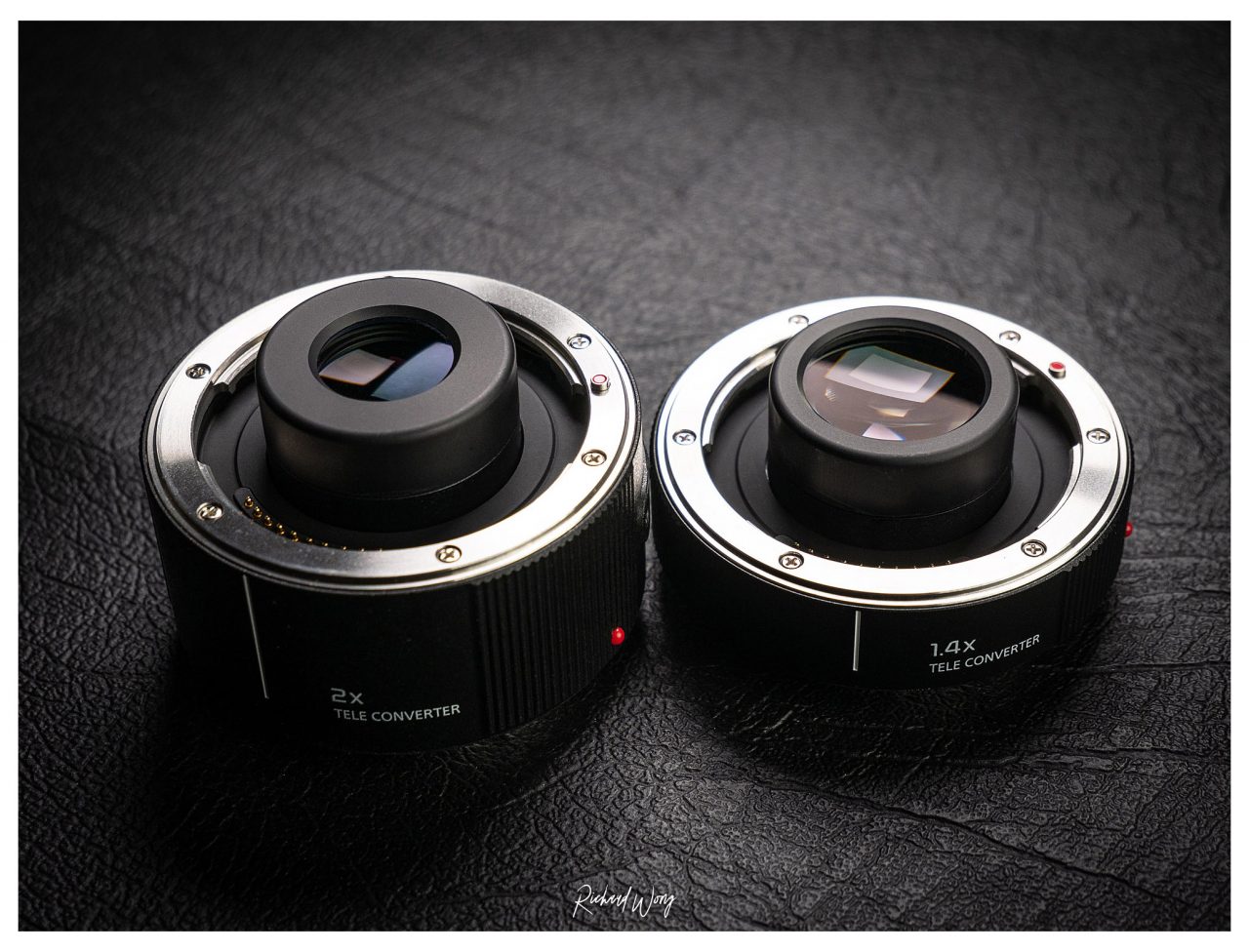
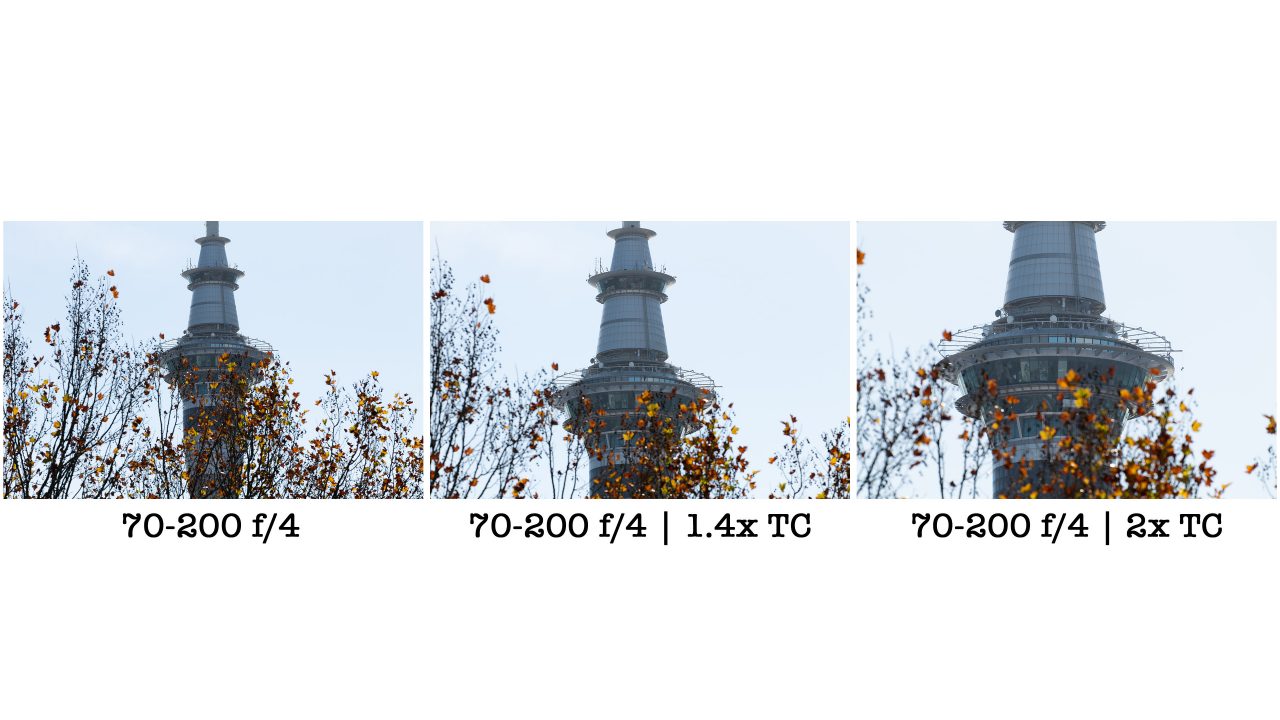
Build Quality / Design
These two teleconverters are made of metal and feels very solid. With full electronic contacts, all the important features like autofocus, image stabilisation, EXIF will work exactly the same.
The front side of the teleconverter extrudes out quite a bit so it won’t even physically be compatible with most of the L-mount lenses in the market right now. At the moment these two teleconverters can only work with the Lumix S 70-200mm f/4 lens but later this year Panasonic will release the Lumix S 70-200 f/2.8 lens which will also be compatible with these converters. According to Panasonic’s road map, Panasonic will release a super telephoto lens in 2020, which I assume will also work with these teleconverters.
When the teleconverter is mounted on the camera, if you try to twist/move/turn the lens, there is very minimal amount of play. Everything fits together perfectly.
There is a rubber seal on one side of the teleconverter to prevent dust or water to get into the camera. In other words, the teleconverters are dust and splash resistant.
Overall there is nothing you can fault about the construction of these two teleconverters.
Image Quality
The following photos show you how the teleconverter affects the image quality when used with the Lumix S 70-200mm f/4. Remember to click on the crop images to see it in full size.
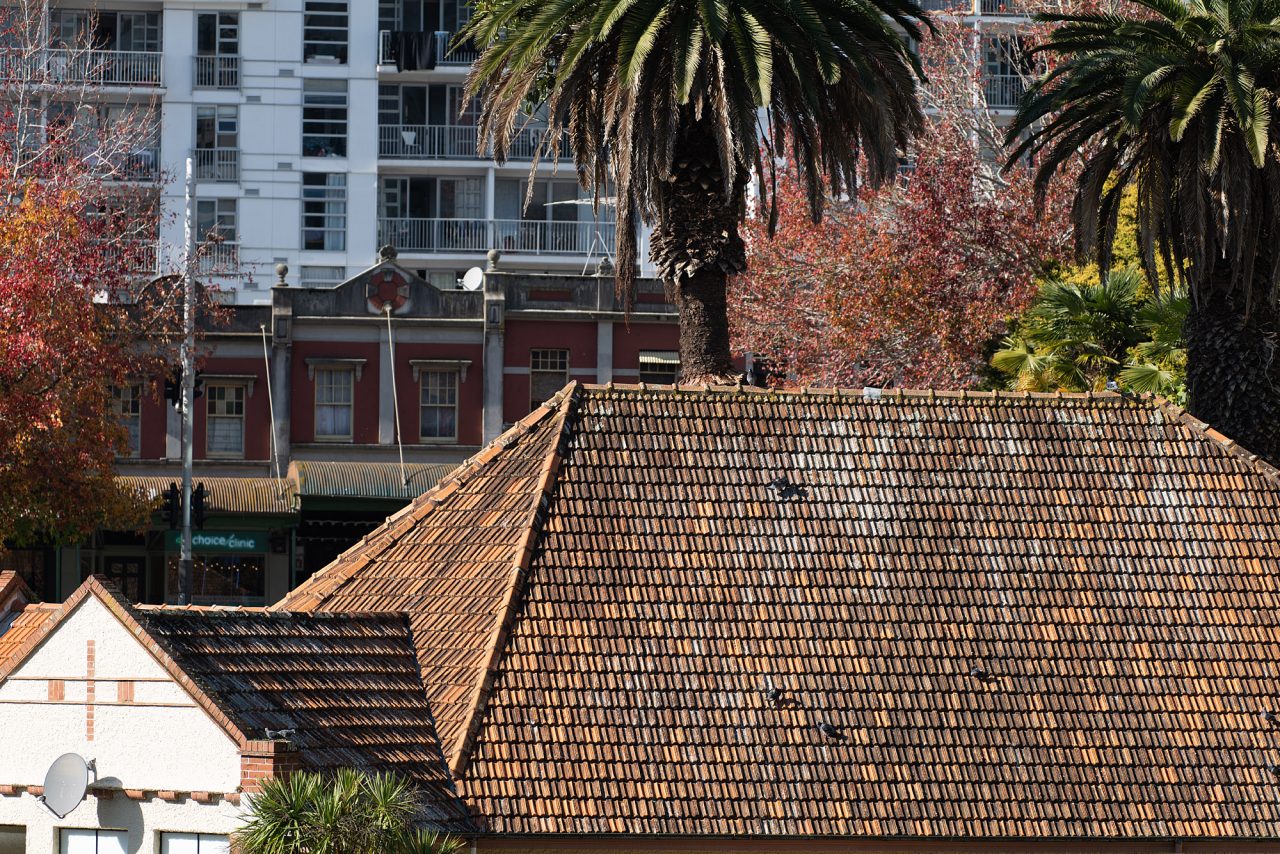
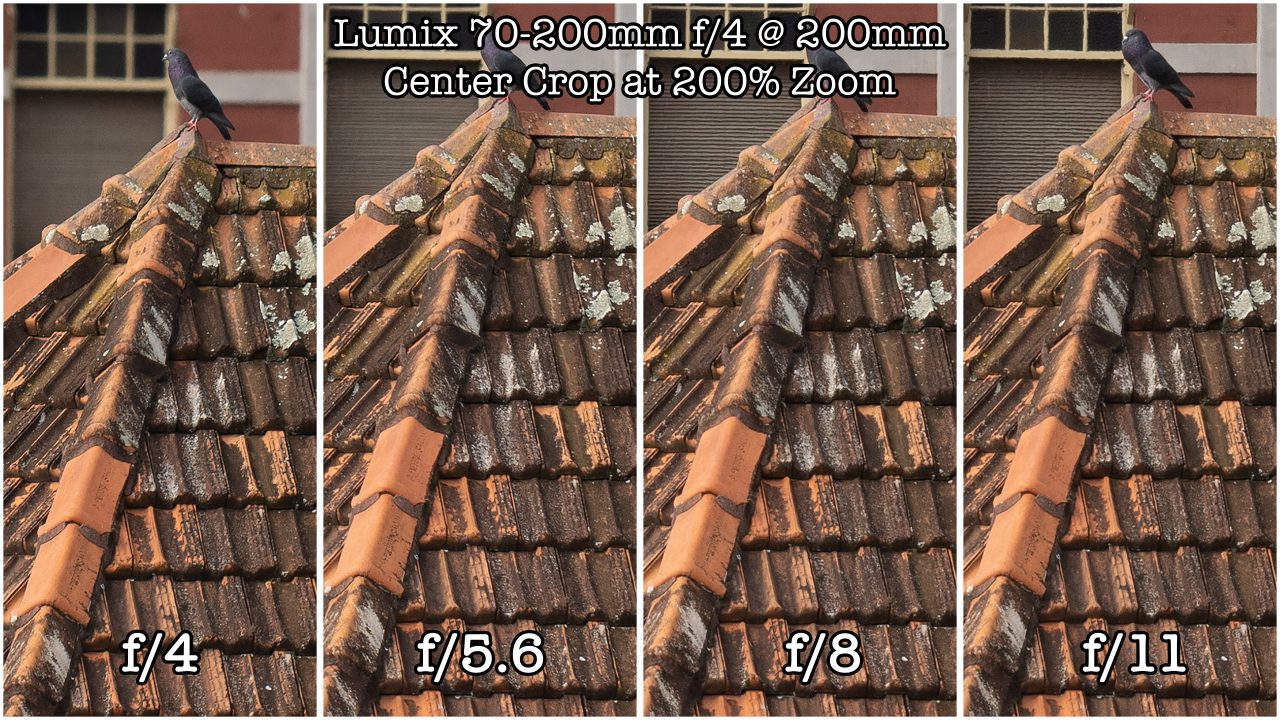
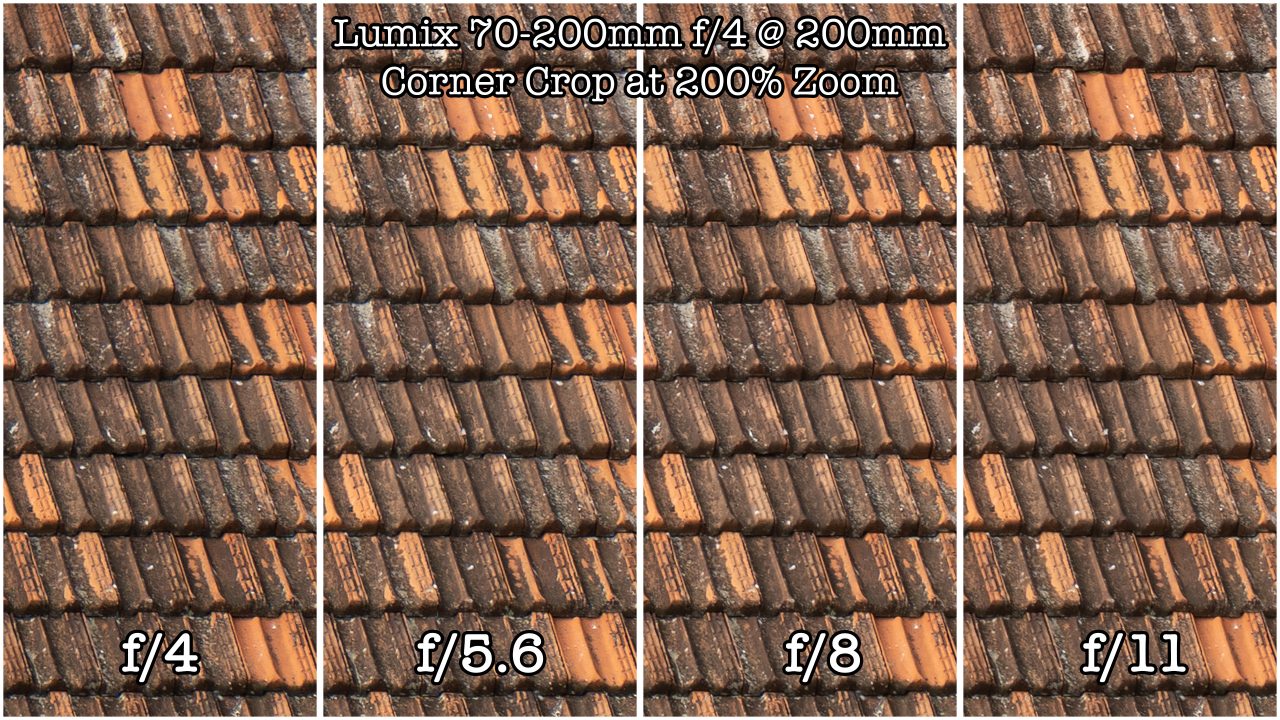
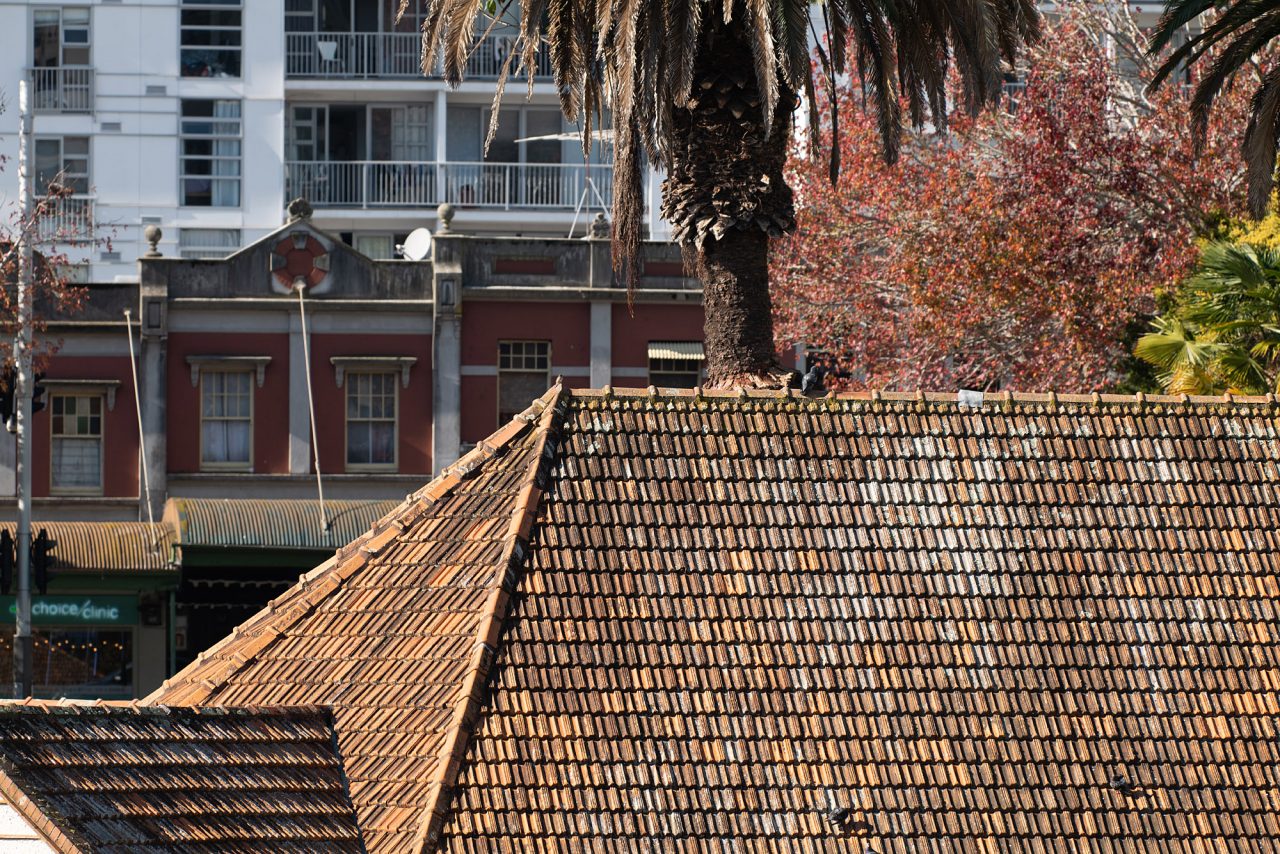
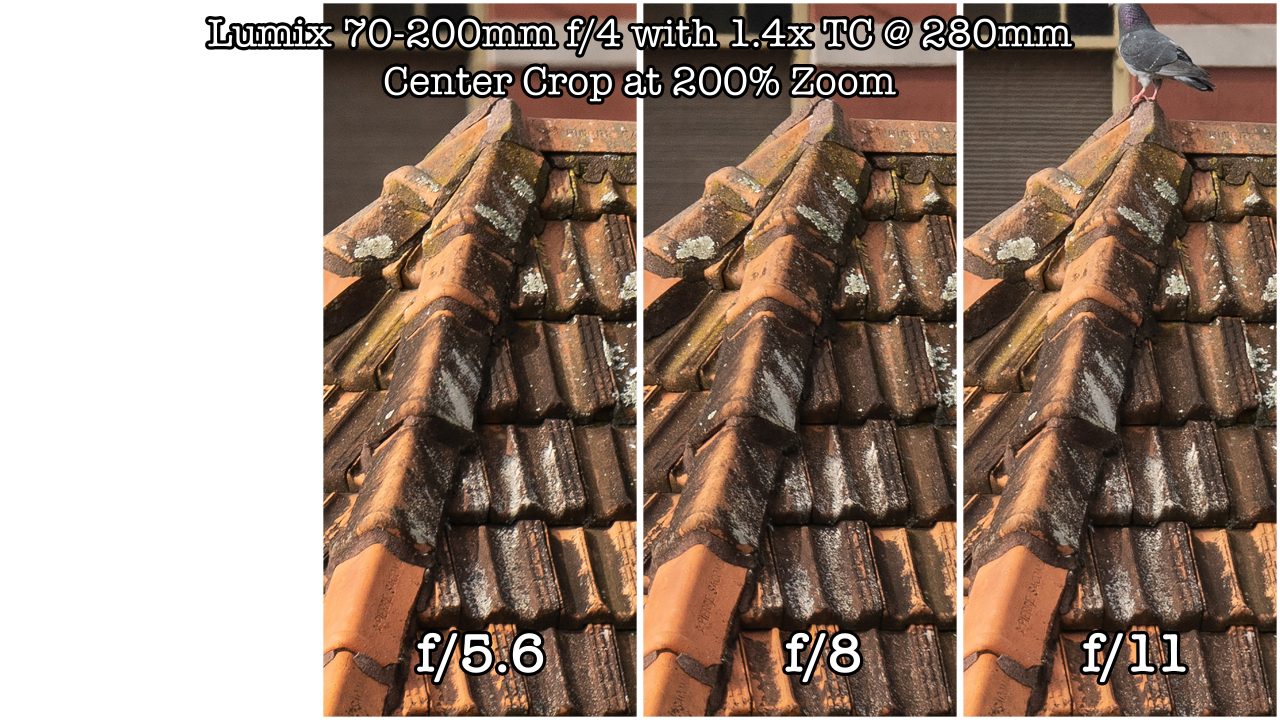
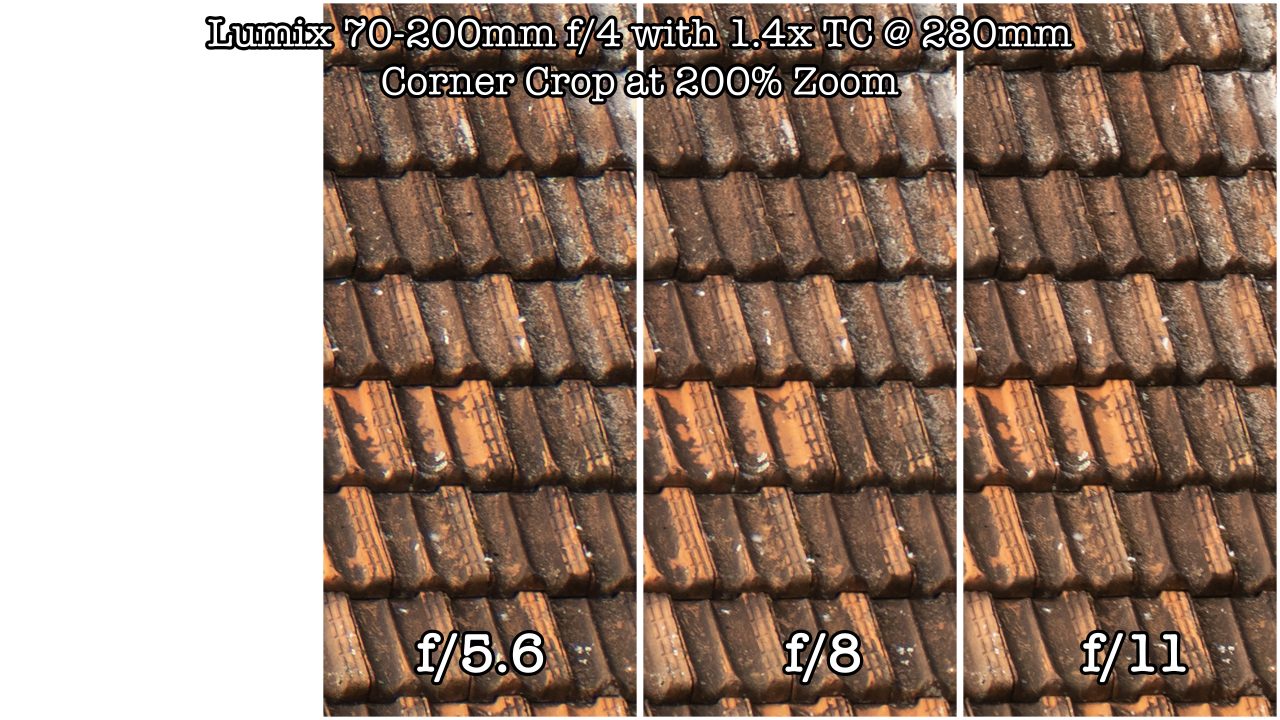
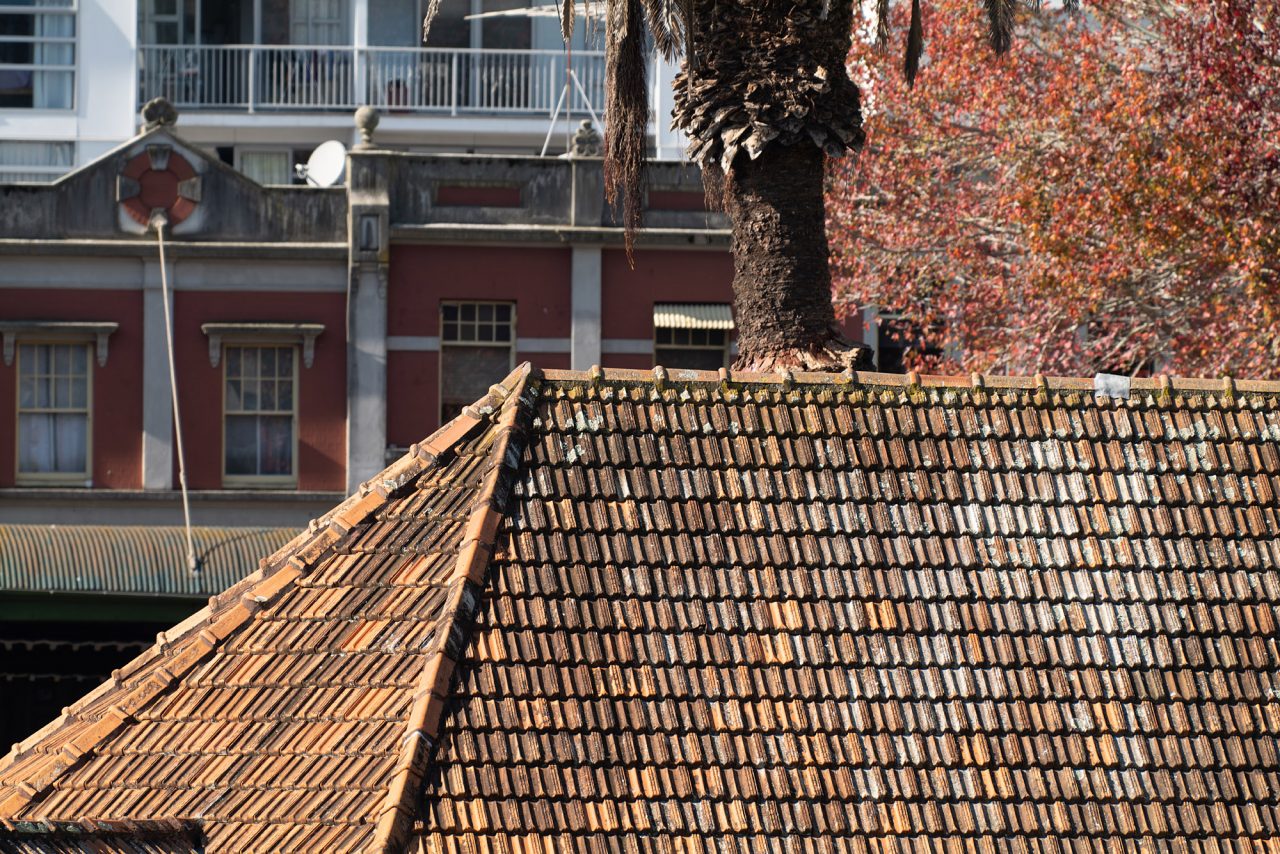
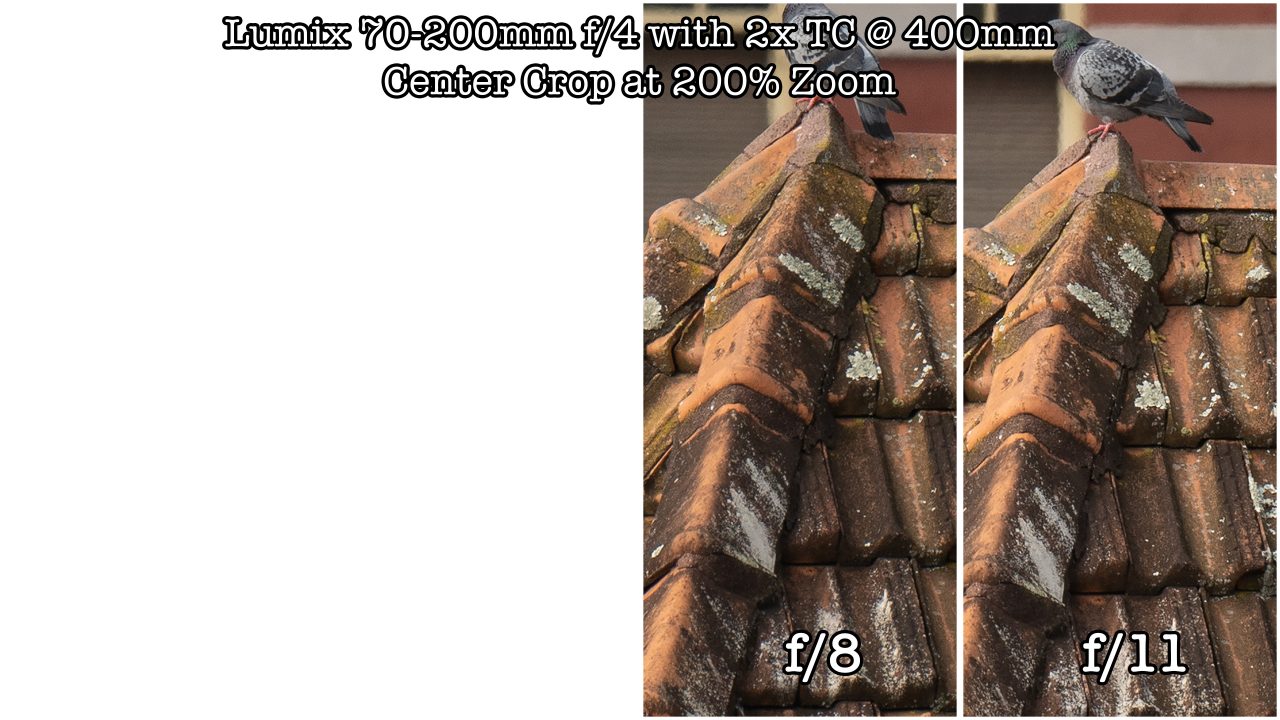
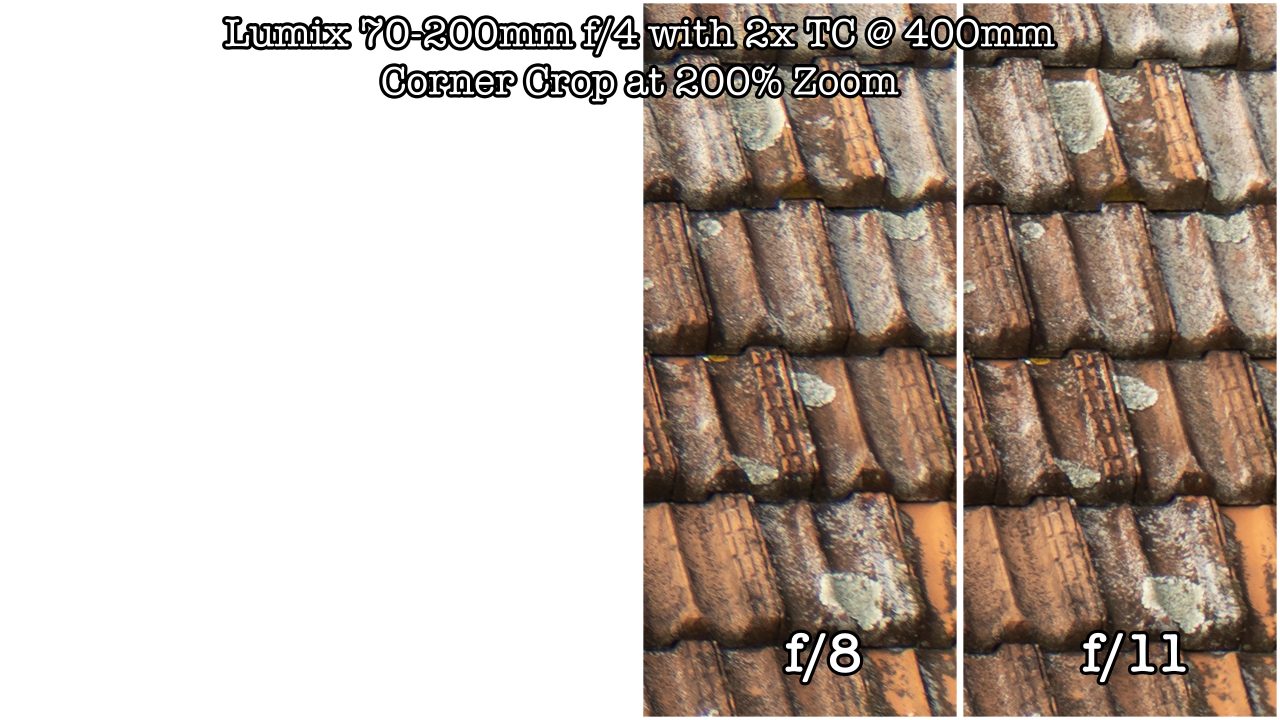
One thing I noticed during this tests is how sharp the Lumix S 70-200mm f/4 lens really is. Even with the 47MP S1R, the image quality at wide open is excellent even at maximum aperture.
Look at the comparison photos above, you can see with the 1.4x teleconverter attached, there is almost no noticeable difference in image quality. This is apart from the fact that the maximum aperture is now 1 stop slower which means you may have to increase the ISO by 1 stop when you are shooting handheld or shooting moving targets.
With the 2x teleconverter, I can see some drop in image quality. Corner crop at maximum aperture f/8 is slightly softer than when no or 1.4x teleconverter was attached. The difference is by no means huge but with S1R’s 47MP sensor, it is visible especially when you zoom in at 100%+ and compare.
High Resolution Mode Comparisons
For people who uses telephoto lenses to shoot landscape, I did the following comparison photos to show you how the teleconverter may impact the image quality in high resolution mode. All the photos were shot on S1R in high resolution mode, at ISO 400, maximum aperture and maximum focal length. To allow me to compare the details, I moved the camera further away from the subject when shooting with the teleconverters. I also downscale the high resolution photo to 47MP so I can compare with the normal output from the S1R.
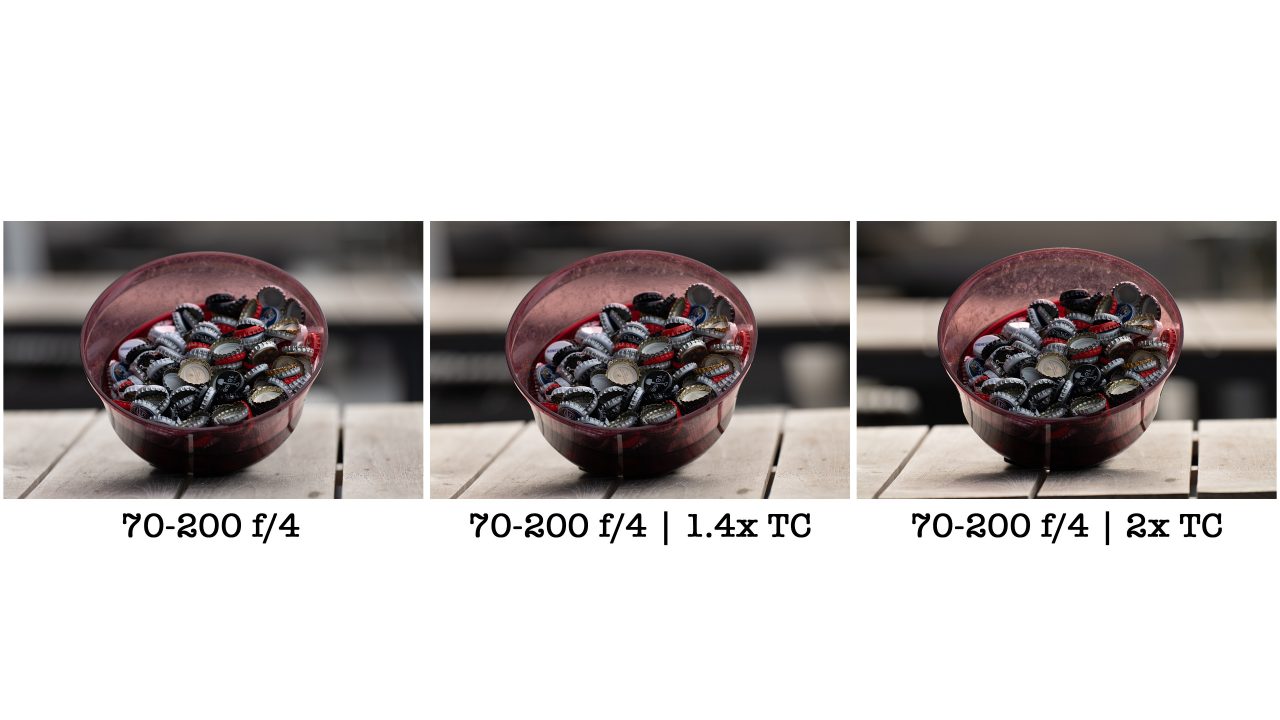
The following are the center crop at 400%.
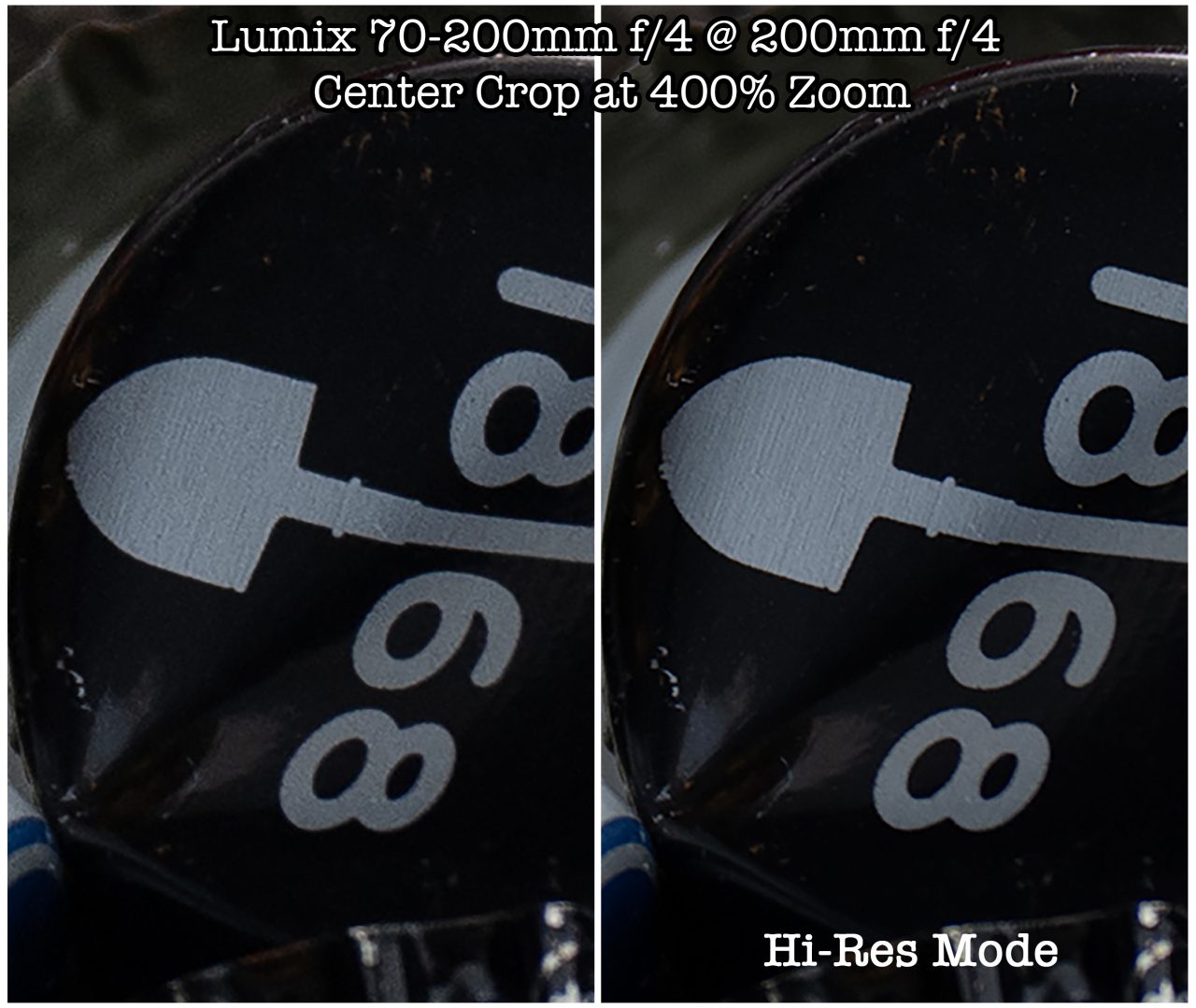
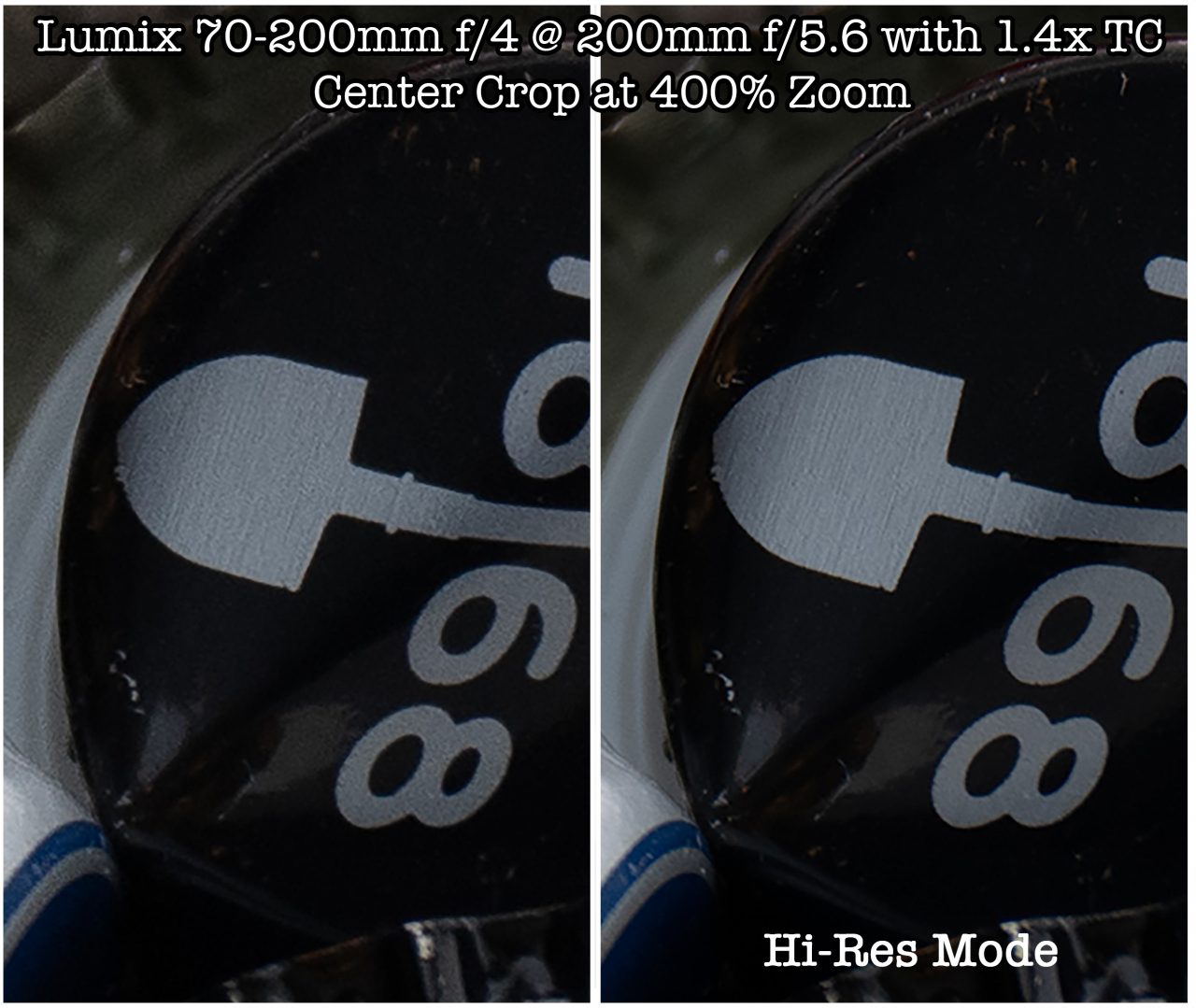
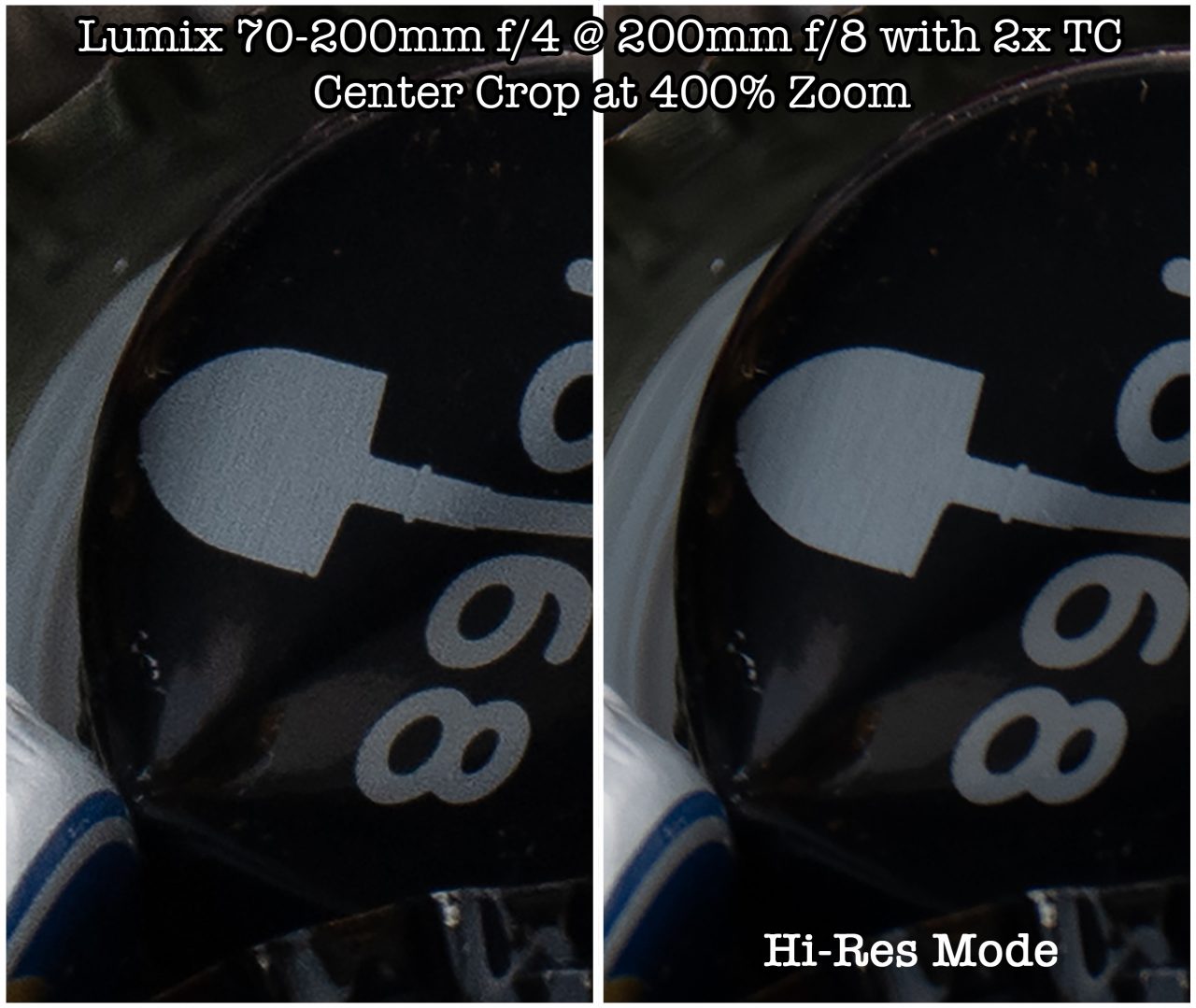
With no teleconverter and 1.4x teleconverter, the high resolution mode photos are very similar. It captures a lot more fine details if you compare to the normal resolution photo even after downscale. But with the 2x teleconverter, the high resolution mode photo look very similar to the normal photo. There really isn’t too much extra details captured in the photo. Presumably it is because the teleconverter has soften the image quite a bit.
One interesting thing is that there is a lot less noise in the high resolution mode photo because of the processing / merging of the multiple photos.
Below is the side by side comparison photo of the center 400% crop from the high resolution mode output.
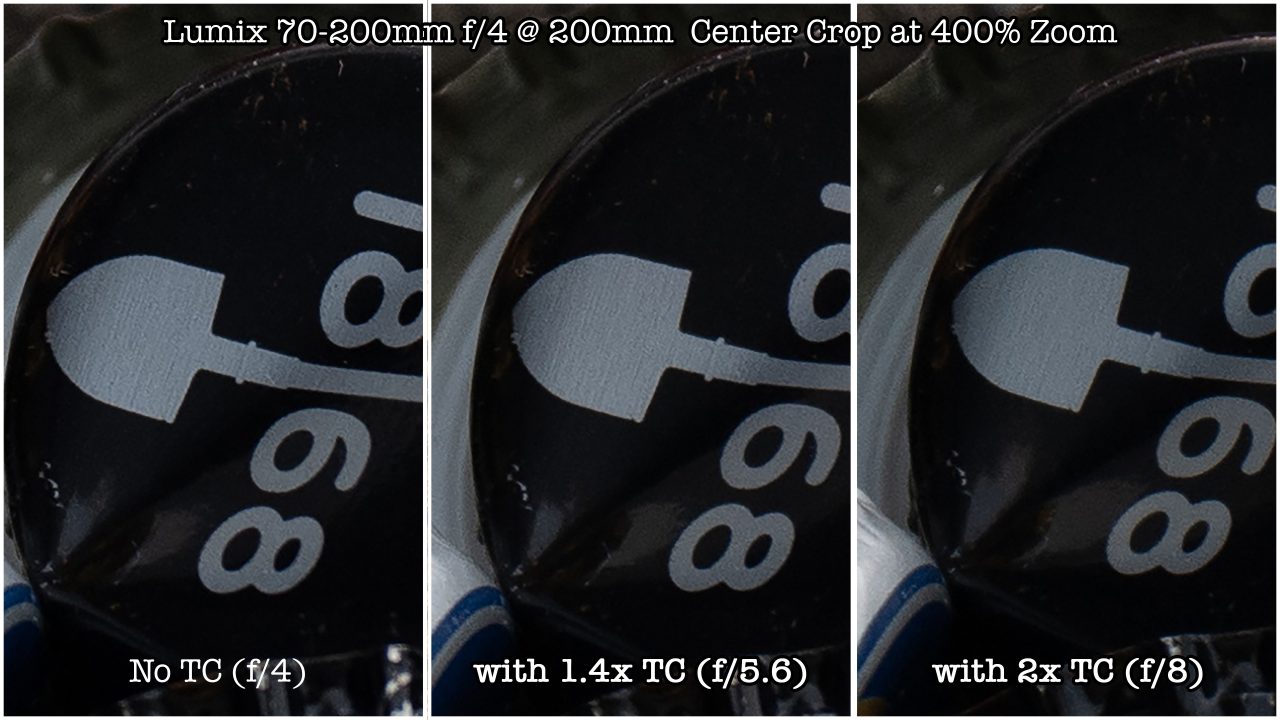
Bokeh Comparison
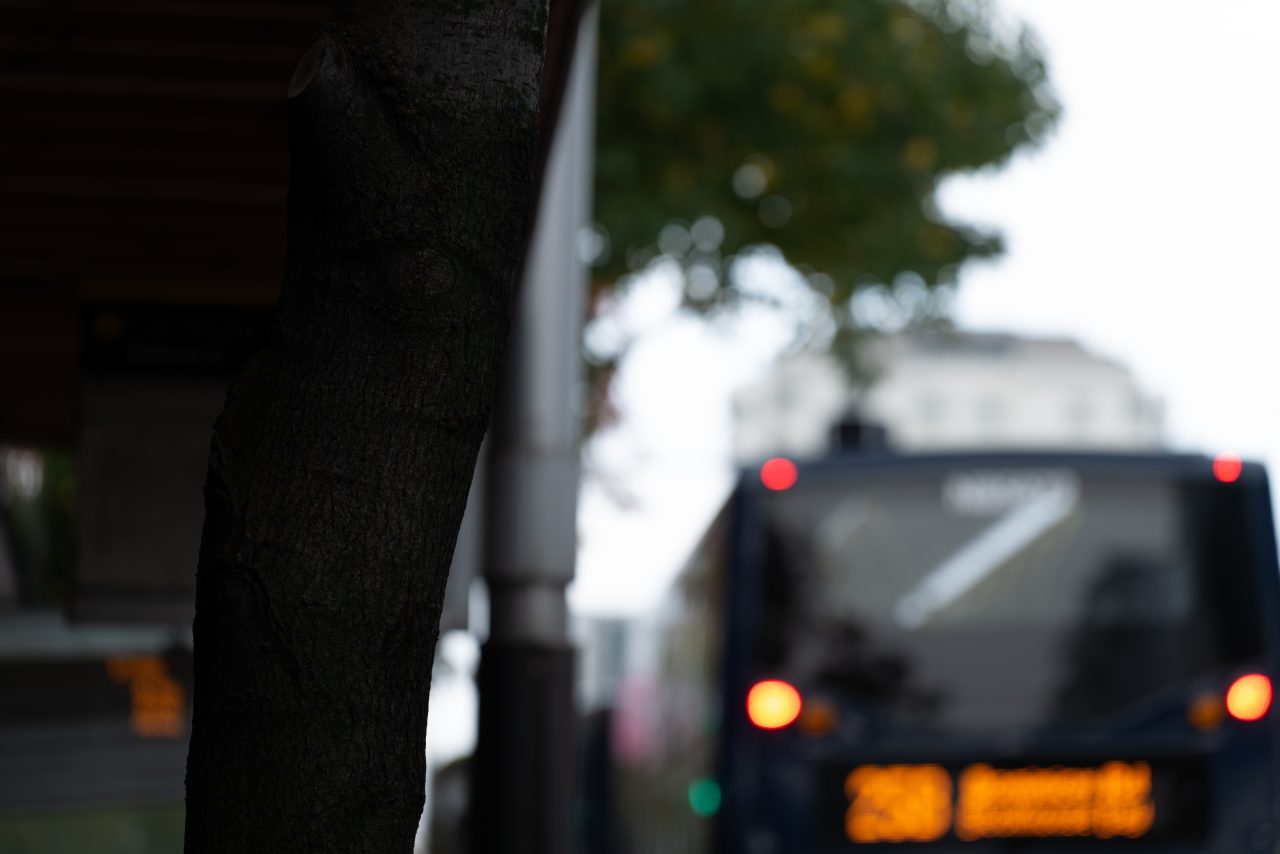
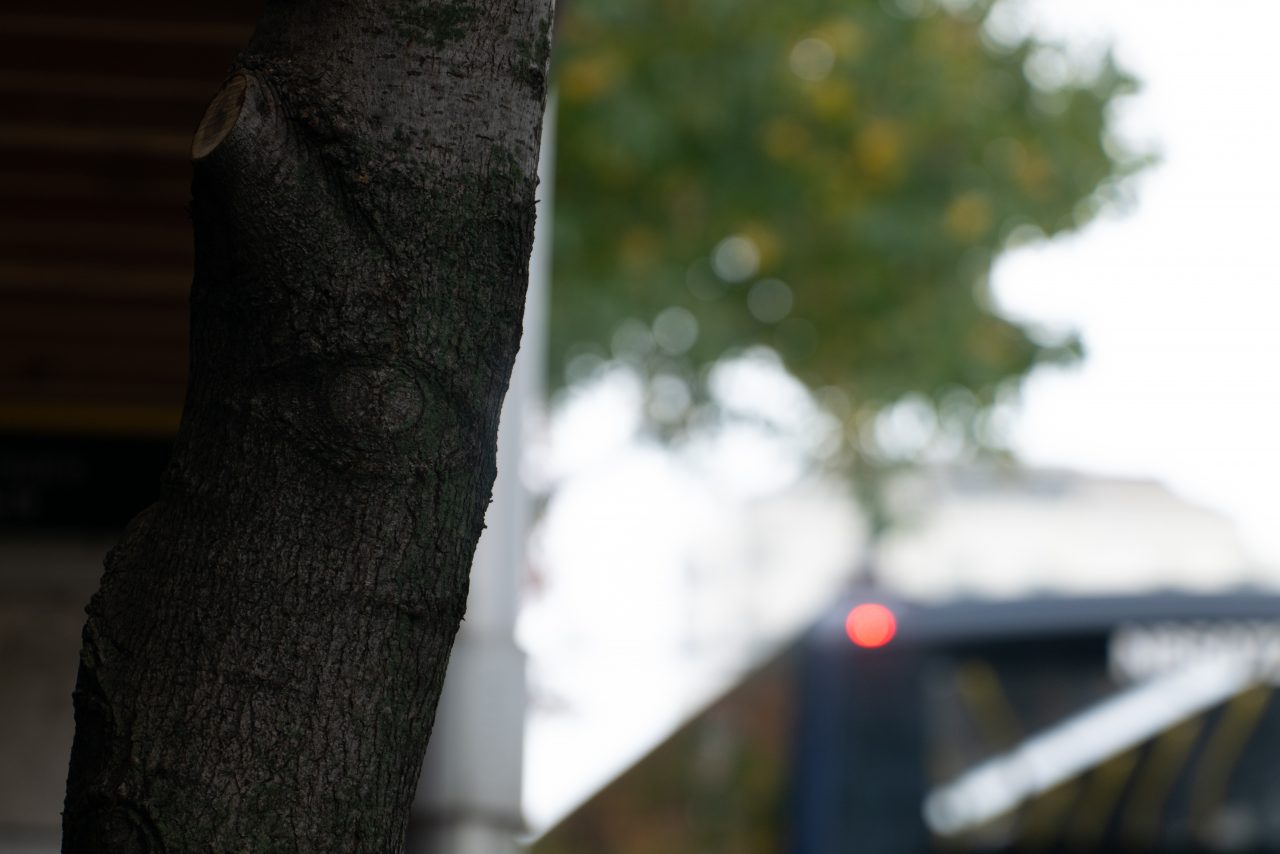
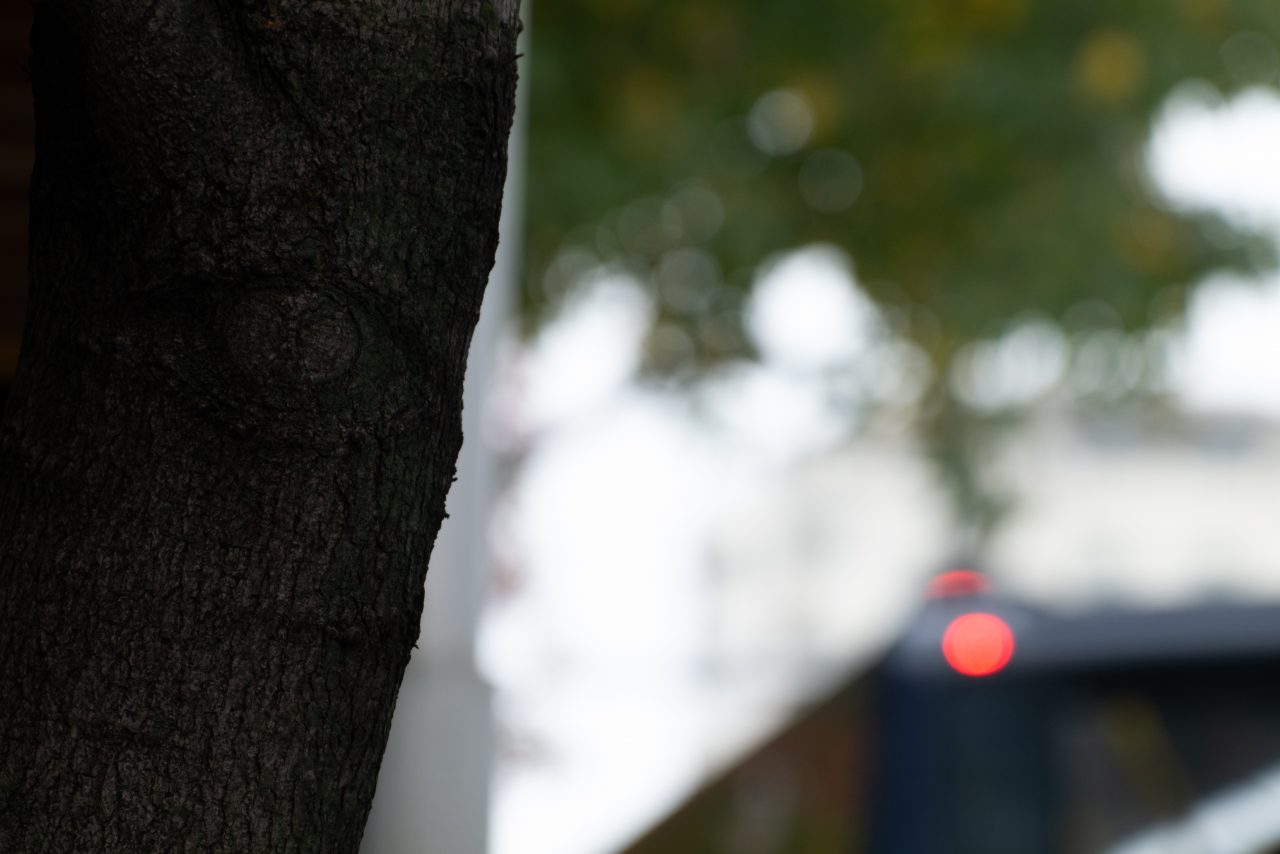
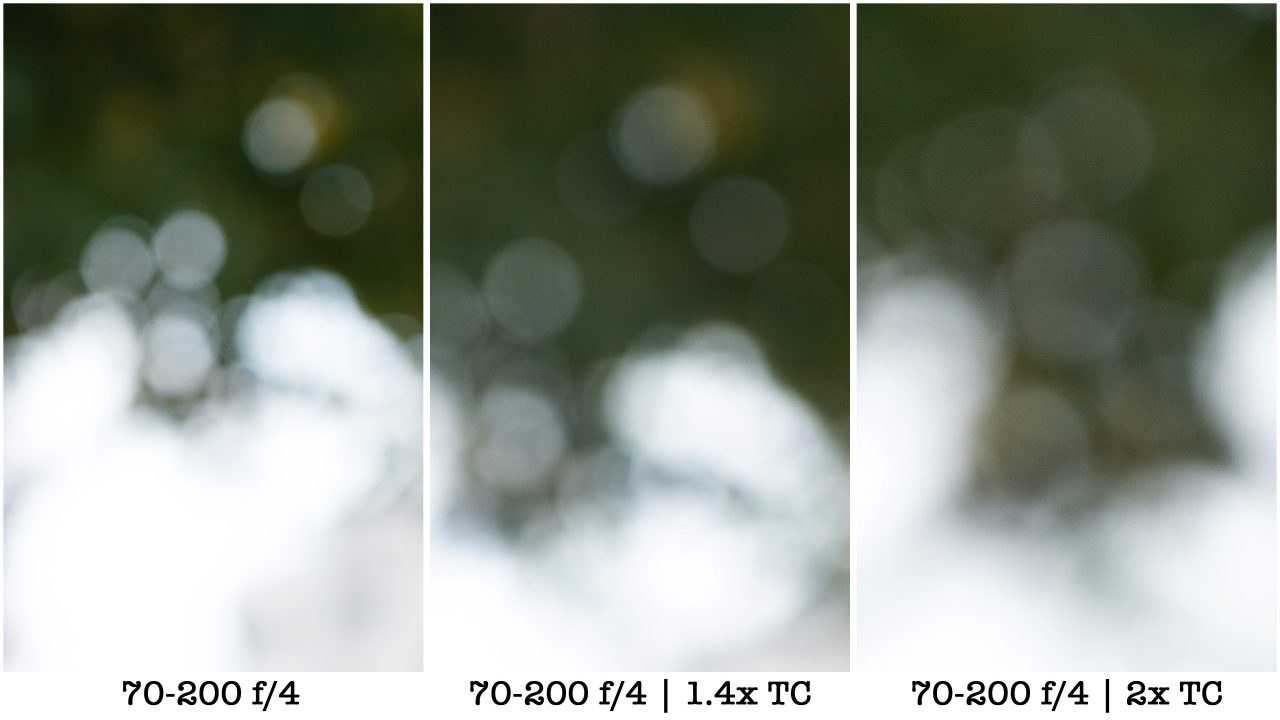
Lens Flare
There appears to be slightly more lens flare with either the 1.4x or 2x teleconverter attached to the lens. The difference is very minor so not sure if it will make any noticeable difference for real world photos but I thought I should mention it in the review anyway
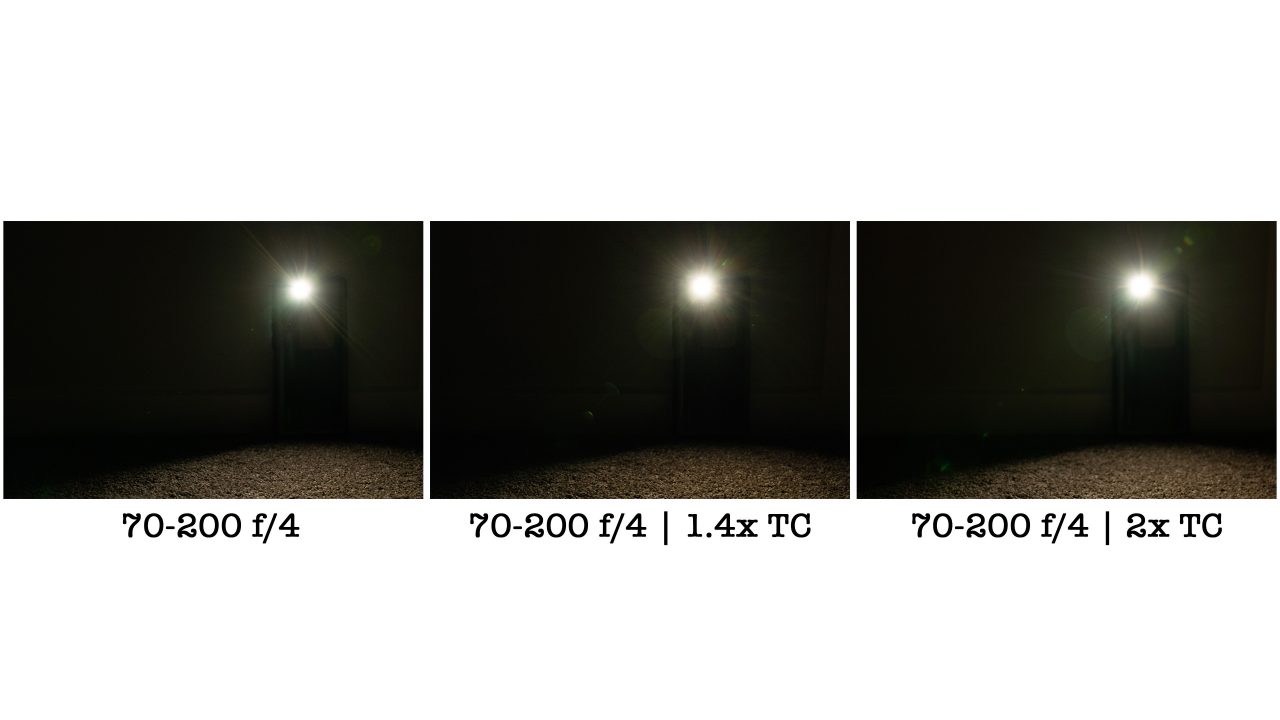
Maximum Magnification
One of the advantage of the teleconverter is that it increases the maximum magnification of the lens. Below are three photos all shot with the 70-200 at 200mm and at minimum focus distance
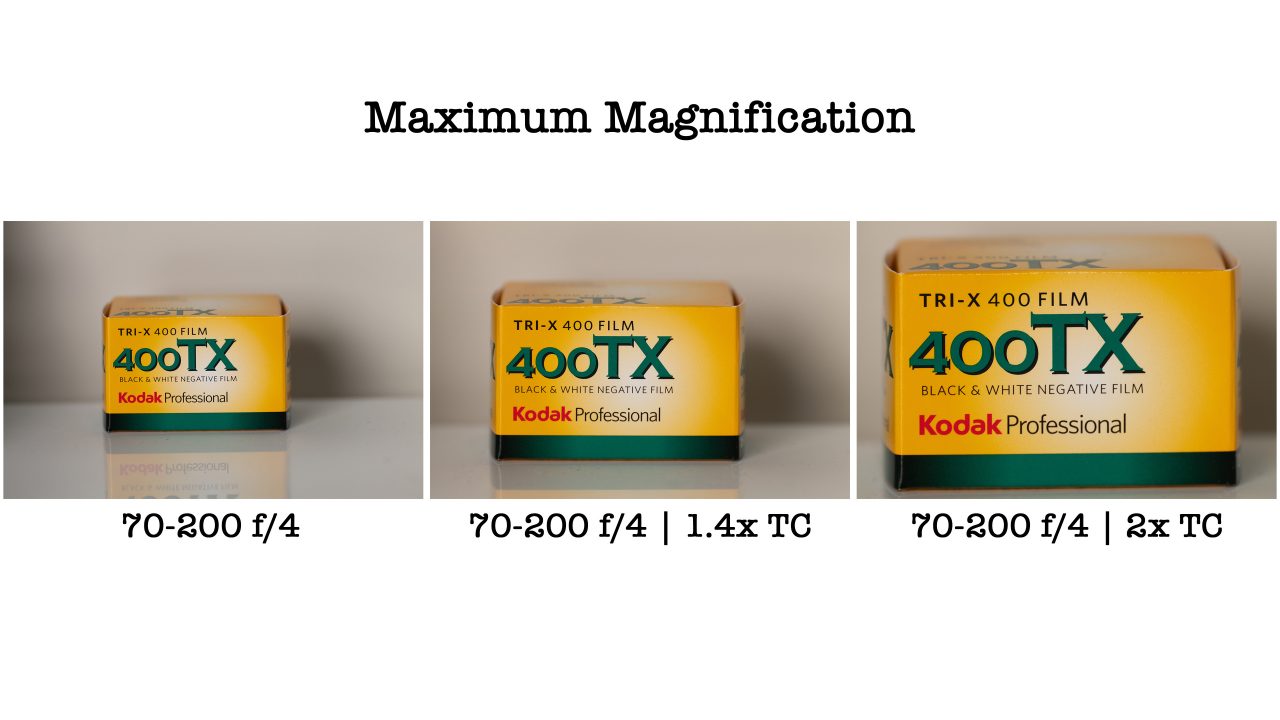
While the teleconverters doesn’t exactly convert the lens to a macro lens, it does increase the maximum magnification quite a bit and make it suitable for a lot of close up photography usage.
Autofocus Performance
When shooting photos on bright sunny day, there is virtually no difference in autofocus performance when you mount either of the teleconverter onto the camera. Autofocus speed is very fast and accurate.
But when it starts getting dark, then you will start to notice some difference in autofocus speed. With the 1.4x teleconverter, the autofocus becomes slightly slower but with the 2x teleconverter you would notice bigger difference in autofocus performance. The difference really depends on the ambient light level, the darker it is the bigger the difference.
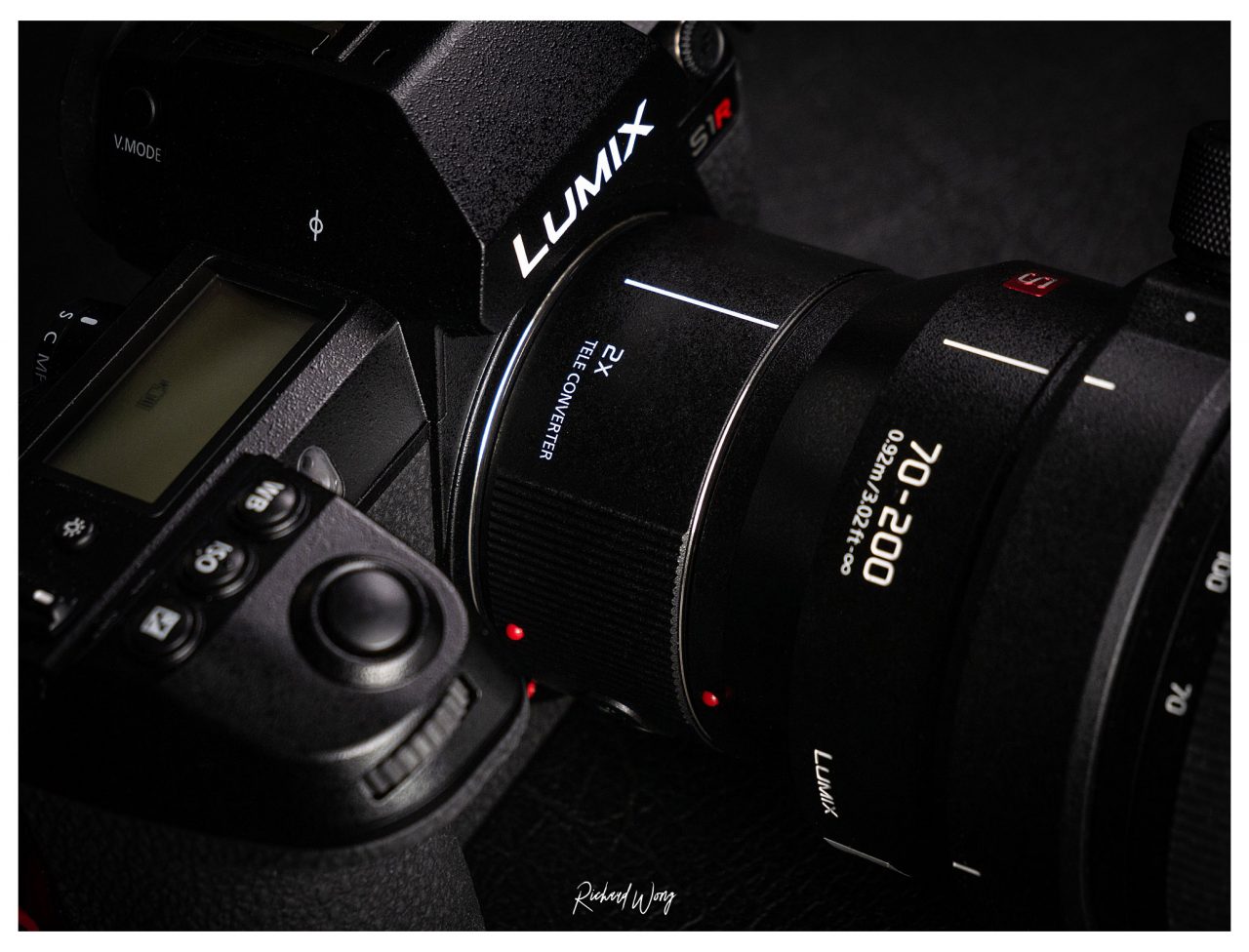
Conclusions
There is no doubt the new Lumix S 1.4x and 2x teleconverters are both very high quality teleconverters. They both have top notch build quality and image quality. For most users I think the 1.4x is the better choice as there is virtually no impact to the image quality, autofocus performance under most situations even when doing controlled side by side comparisons.
But if you really need the extra reach, the 2x teleconverter isn’t a bad choice as well as long as you understand there will be a bit of trade off in terms of image sharpness and autofocus performance when shooting under low light condition.